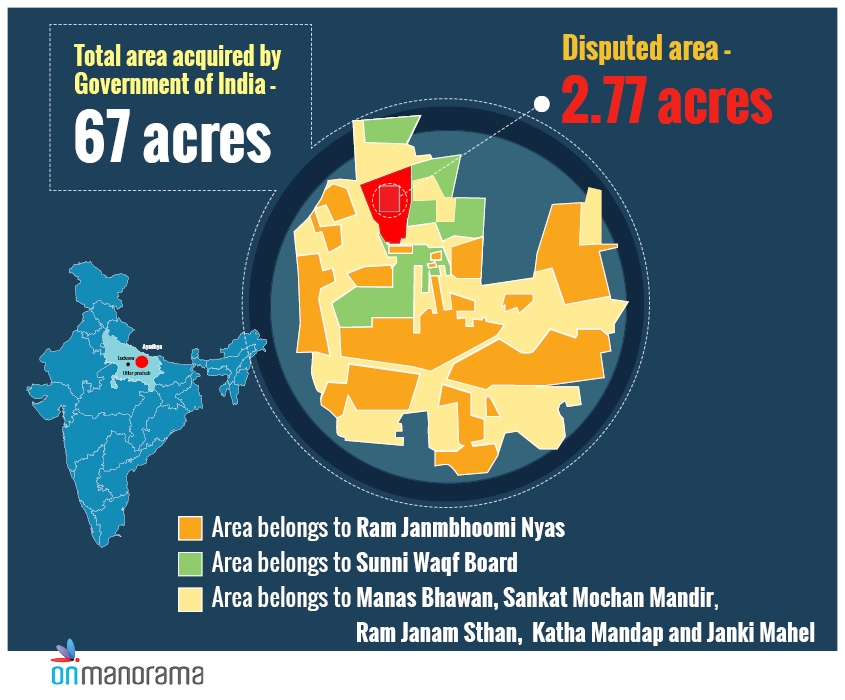The five-bench Constitution Bench of the Supreme Court on Saturday delivered a landmark judgement on the Ayodhya title dispute between Hindus and Muslims.
The bench ruled that the Hindu claimants be given the disputed site and Muslim bodies be given five acre land to build the mosque at a separate place.
Important points of the verdict
• The Central Government should, within a period of three months from the date of the judgment (November 11, 2019), formulate a scheme. The scheme should envisage setting up of a trust. The scheme should make provisions for the functioning of the trust, including its management and powers of the trustees.
• Possession of the 2.77 acre disputed land belongs to the deity Ram Lalla
• Possession of the inner and outer courtyards shall be handed over to the trust. The central government can hand over the rest of the acquired to the trust.
• Possession of the disputed property shall continue to vest in the statutory receiver under the central government until it is handed over to the trust.
• A suitable plot of land measuring 5 acres shall be handed over to the Sunni Central Waqf Board. The land shall be allotted either by the central government or the state government at a suitable prominent place in Ayodhya.
• The Sunni Central Waqf Board can construct a mosque on the allotted land.
• Nirmohi Akhara should be given appropriate representation in the trust.
Major observations of the court
• Babri mosque, demolished on December 6, 1992, was not built on vacant land.
• A temple lay beneath the Babri Masjid, according to the Archaeological Survey of India (ASI). It established that the underlying structure was not an Islamic one. ASI had not established whether temple was demolished to build the mosque.
• Faith of Hindus that Lord Rama was born at demolished structure is undisputed. The existence of Sita Rasoi, Ram Chabutra and Bhandar grih are the testimony of the religious fact of the place.
• Evidence suggest Hindus were in possession of outer court yard. Extensive nature of Hindus worshipping at outer courtyard at site has been there. Evidence suggest Muslims offered Friday prayers at mosque which indicates they have not lost possession. Despite obstruction caused in offering prayers at Mosque, evidence suggest that there was no abandonment. Iron railing was set up at site in 1856-1857, and it suggests Hindus kept worshipping at the site.
• Muslims have not adduced evidence they were in exclusive possession of dispute site. The UP Sunni Central Waqf Board has failed to establish its case. Hindus established their case that they were in possession of outer courtyard.
• Damage to Babri Mosque was violation of law.
Who delivered the verdict
The 5-judge Constitution Bench, which delivered the Ayodhya verdict on Saturday, comprised Chief Justice Ranjan Gogoi and Justices S A Bobde, D Y Chandrachud, Ashok Bhushan and S Abdul Nazeer.

















.jpg.transform/170x160/image.jpg)
